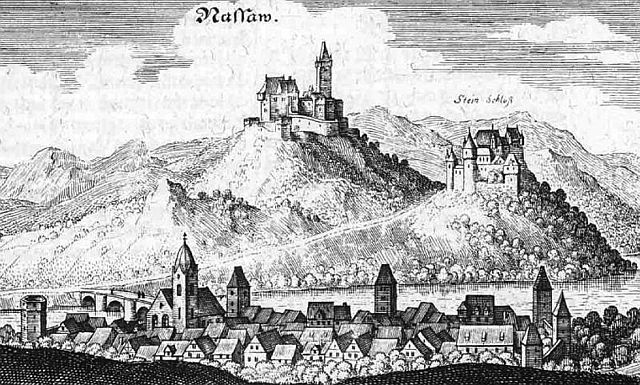The House of Nassau is a diversified aristocratic dynasty in Europe. It is named after the lordship associated with Nassau Castle, located in present-day Nassau, Rhineland-Palatinate, Germany. With the fall of the Hohenstaufen in the first half of the 13th century royal power within Franconia evaporated
and the former stem duchy fragmented into separate independent states. Nassau emerged as one of those independent states as part of the Holy Roman Empire. The lords of Nassau were originally titled "Count of Nassau", subject only to the Emperor, and then elevated to the princely class as "Princely Counts". Early on they divided into two main branches: the elder (Walramian) branch, that gave rise to the German king Adolf, and the younger (Ottonian) branch, that gave rise to the Princes of Orange and the monarchs of the Netherlands.
Laurenburg Castle
Nassau Castle became the seat of dynasty in 1159.
Weilburg
Weilburg Castle
Nassau, Rhineland-Palatinate
Nassau is a town located in the German state of Rhineland-Palatinate. It lies on the lower course of the Lahn River, on the mouth of the Mühlbach, between Limburg an der Lahn and the spa town of Bad Ems, and is located in the Nassau Nature Park, surrounded by the Westerwald to the north and the Taunus to the south. The town is on the German-Dutch holiday road, the Orange Route. As of 2021, it had a population of 4,592.
Nassau, Rhineland-Palatinate
Nassau Castle—ancestral seat of the House of Nassau—above the Lahn valley. The lordship associated with Nassau Castle was the namesake of numerous other entities called "Nassau".
Nassau in Matthäus Merian's Topographia Hassiae, in 1655. The city with the two castles Nassau Castle and Stein Castle (de: Steinsche Burg, now only a ruin) on the other side of the Lahn.
Nassau city hall








